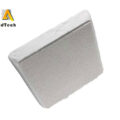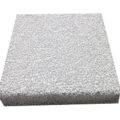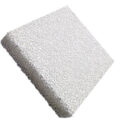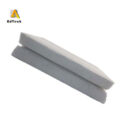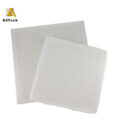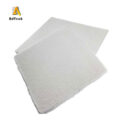Ceramic filter for casting is installed in the filter box between the furnace mouth and the distributing launder. The filter box is made of refractory materials. It can be heated through many times of chilling without cracking, and has the advantages of high strength and good heat preservation. It is the best material for making filter boxes and chute.
The closer the filter box is to the splitter plate, the better, because it can shorten the flow distance of aluminum liquid after filtration, and reduce or avoid the re generation of oxides. The aluminum liquid flows out of the furnace mouth, passes through the filter box, and then flows into the splitter plate through the chute. When the filtration device is started, the drop before and after the melt filtration is about 50 mm, but with the extension of the filtration time, the inclusions on the surface and hole wall of the filter plate increase, the filtration flow rate is small, and the drop between the front and back increases. When the casting is finished, the drop increases to 60-120mm.
The selection of ceramic foam filter must be based on the flow rate of liquid aluminum. Secondly, the cleanliness of melt, the highest content of inclusions and the total throughput of melt should be considered. When designing the filter device, it is necessary to ensure that the filter plate is immersed in liquid aluminum during melt casting according to the specifications of the selected filter plate and considering the drop of furnace mouth and splitter plate.
In addition, it must be considered that the installation and disassembly are very safe and convenient, and the aluminum liquid in the filter box can be completely drained after the melt casting.
The surface practice of the filter plate has proved that the foam ceramic filter plate is the most effective tool to remove the oxide inclusions in the melt. Ordinary fiber filtration can only remove large inclusions, while foam ceramic filter plates can simultaneously filter large inclusions and fine inclusions.
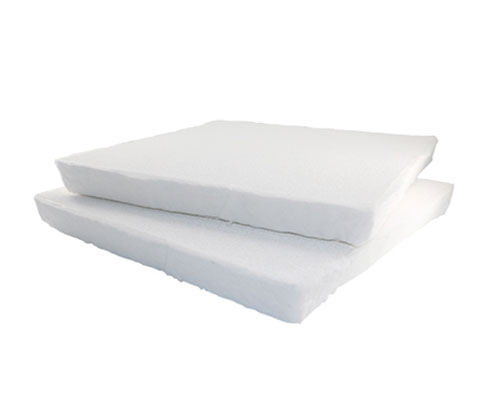
Attention should be paid to the following problems when using foam ceramic filter for casting in production.
- Choose appropriate foam ceramics. When choosing foam ceramics, the requirement of filtration accuracy should be considered first. In most cases, the foam ceramic with 30 PPI meets the requirements. Secondly, the flow rate of liquid aluminum per unit time required for casting speed, the original cleanliness of the melt, the highest content of inclusions in the metal, and the total metal flux should be considered.
- Install foam ceramics correctly. Generally, the foam ceramics are arranged horizontally in the filter basin to let the aluminum water pass through vertically or vertically. When the downcasting method is adopted, it has the advantages of uniform rise of aluminum water, no turbulence when touching the filter, uniform start-up of the filter can be ensured, and the risk of ditch flow can be reduced. In addition, when installing foam ceramics, the assembly part must be sealed with fire-resistant fiber to eliminate the possibility of any bypass.
- Before the filtration, it is better to heat the foam ceramic to the melt temperature, so as to ensure that the molten aluminum does not solidify the metal and block the hole.



